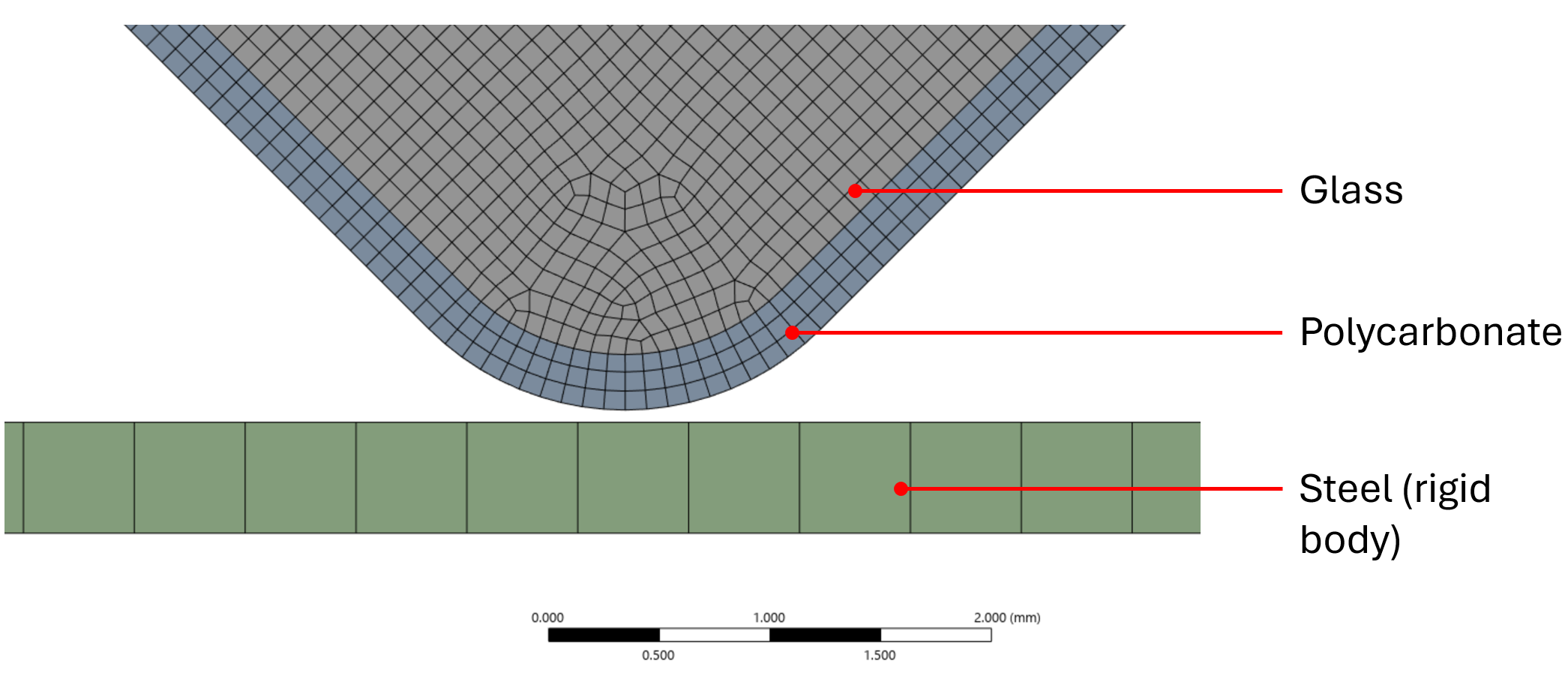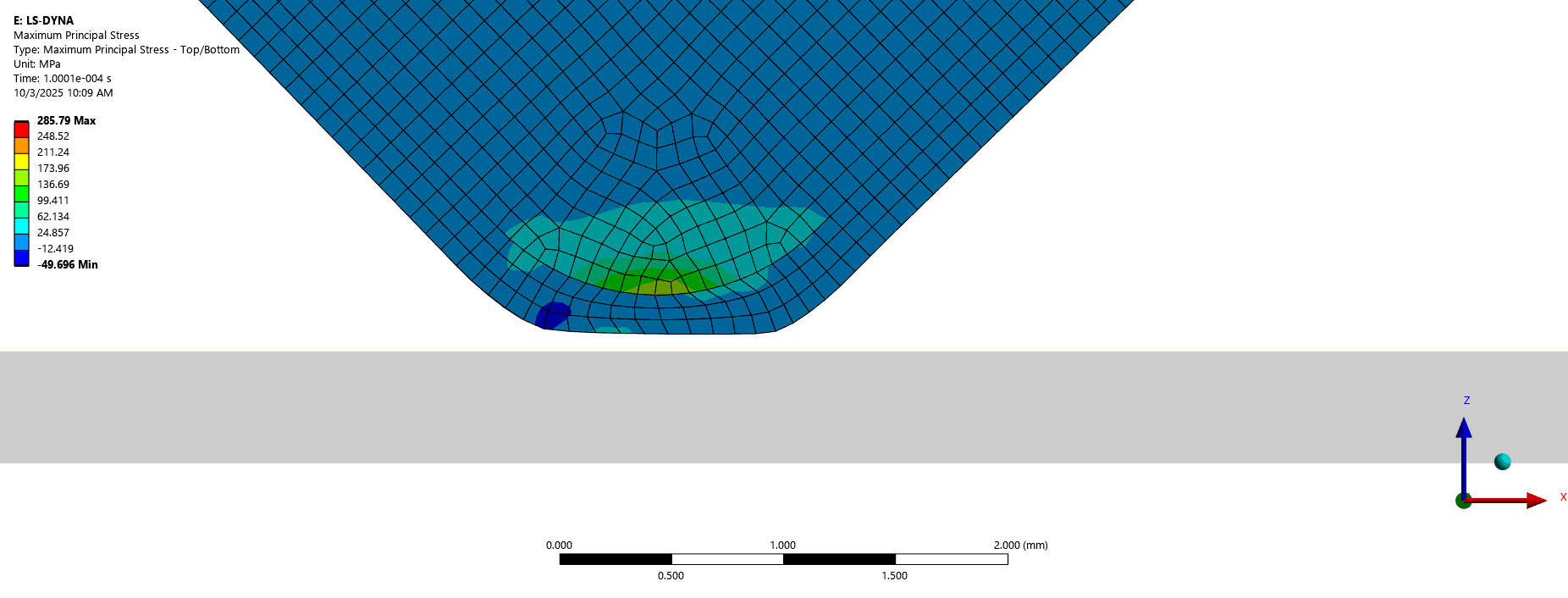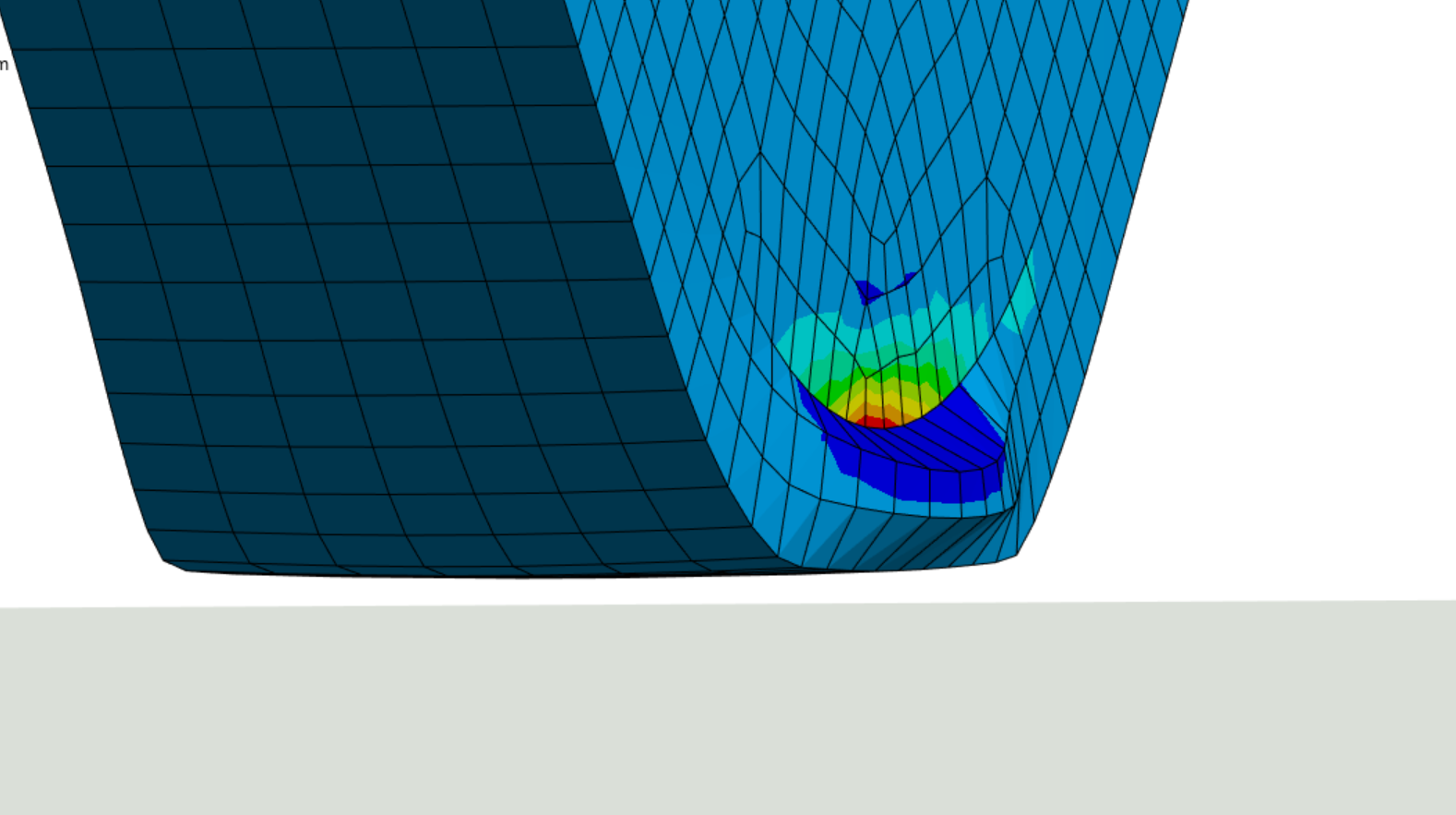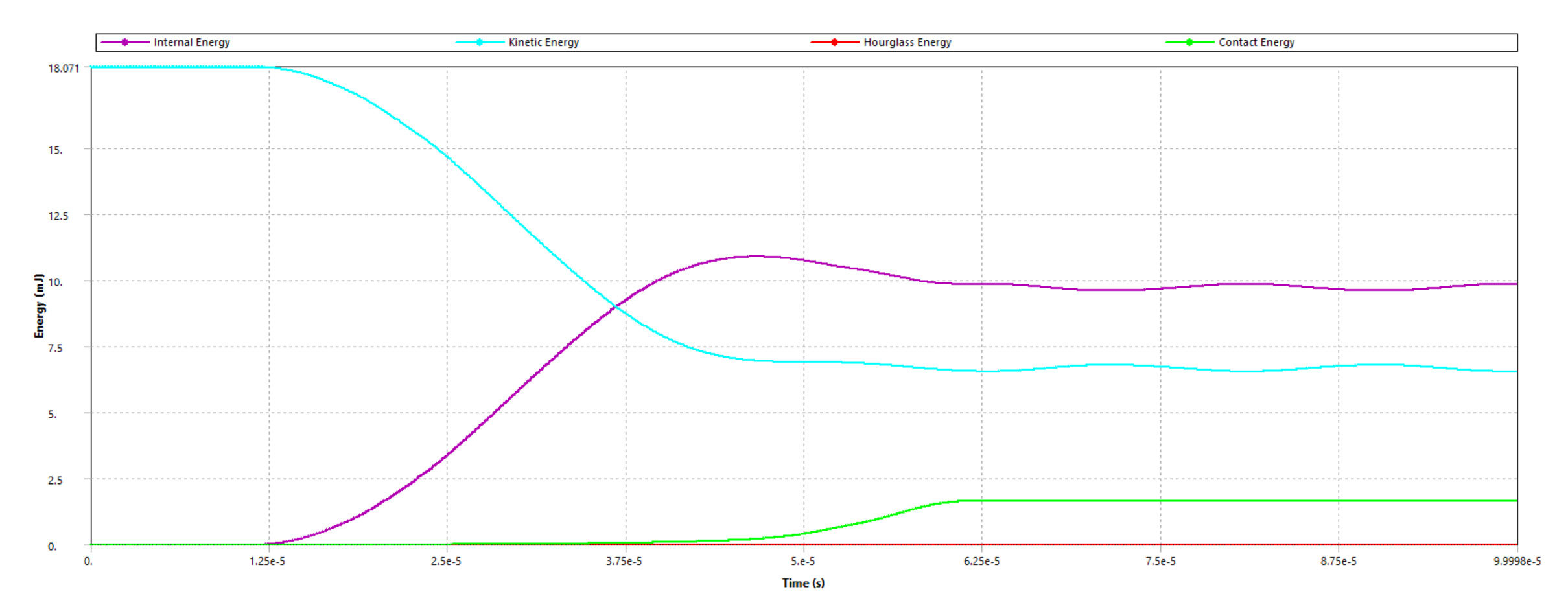-
-
October 3, 2025 at 7:14 pm
shrihari_sampathkumar
SubscriberHello,
I have a drop-impact simulation of a Glass+Plastic (polycarbonate) assembly. I'm get results that look like the Polycarbonate is undergoing plastic deformation.
However, I have limited experience validating plastic deformation in LS-DYNA and would like some help on this. I'm especially worried if i've artificially introduced some non-physical plastic deformation in my attempts to eliminate Hourglass energy.
Setup:
- Materials: Glass - Proprietary (substrate) , Plastic, PC High viscosity - Ansys default library (around the glass perimeter) , Steel - Default library(rigid body- shell)
- Contacts:
- Glass <-> PC : Shared topology
- PC <-> Plate : Frictional
- Behavior: Asymmetric
- Formulation: Pure Penalty (Automatic_nodes_to_surface)
- Viscous damping coefficient: 0.1
- Contact / Target Penalty Scale Factors: 10
- Soft Constraint Formulations: Segment Based
- Soft constraint Scale Factor: 1
- Depth: 2
- Mesh: Hex8 (for glass, PC), and Quad4 (plate)
- Hourglass controls:
- PC: ID 7 (Belytschko-Bindeman Linear Total Strain), coefficient = 1
- Element Controls:
- PC: Fully Integrated S/R Solid
- Analysis setting:
- Global Hourglass control: ID 5 (Exact Volume Flanagam-Belytschko Stiffness Form), coefficient = 0.1
Points to note / Concerns:
- High distortion of the PC (not sure how I can check this is actually physical/ potential mesh issue)
- The contact energy increases and stays high (I think this is ok since there's sliding at the frictional interface)
- Internal energy stays high after impact (again, I think this is physical since there's work done on the PC layer)
-
Viewing 0 reply threads
- You must be logged in to reply to this topic.
Ansys Innovation Space


Trending discussions


Top Contributors


-
3977
-
1461
-
1272
-
1124
-
1021
Top Rated Tags


© 2025 Copyright ANSYS, Inc. All rights reserved.
Ansys does not support the usage of unauthorized Ansys software. Please visit www.ansys.com to obtain an official distribution.











